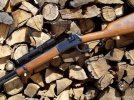Thumbcocker
Active Member
I have the proper sight to mount on this rifle. I have a drill press and am thinking I can probably drill and tap the necessary holes. A couple of questions:
Is there any place on the receiver to avoid? I'm thinking I need to avoid the locking bolt channels.
Should the holes be drilled all the way through? Doesn't seem like it would hurt anything since the factory drilled several holes through it. I figure I may have to smooth off some burrs on the inside. If it requires blind holes i will have to outsource.
Any advice on what type of bit to use? I'm willing to spring for a good bit .
Is there any place on the receiver to avoid? I'm thinking I need to avoid the locking bolt channels.
Should the holes be drilled all the way through? Doesn't seem like it would hurt anything since the factory drilled several holes through it. I figure I may have to smooth off some burrs on the inside. If it requires blind holes i will have to outsource.
Any advice on what type of bit to use? I'm willing to spring for a good bit .

